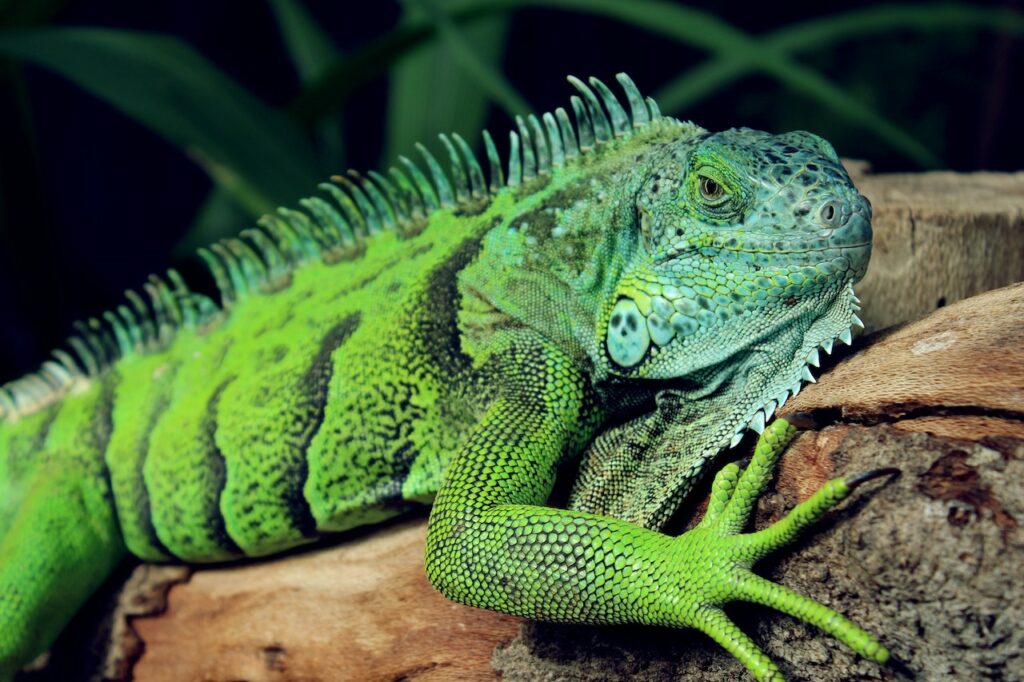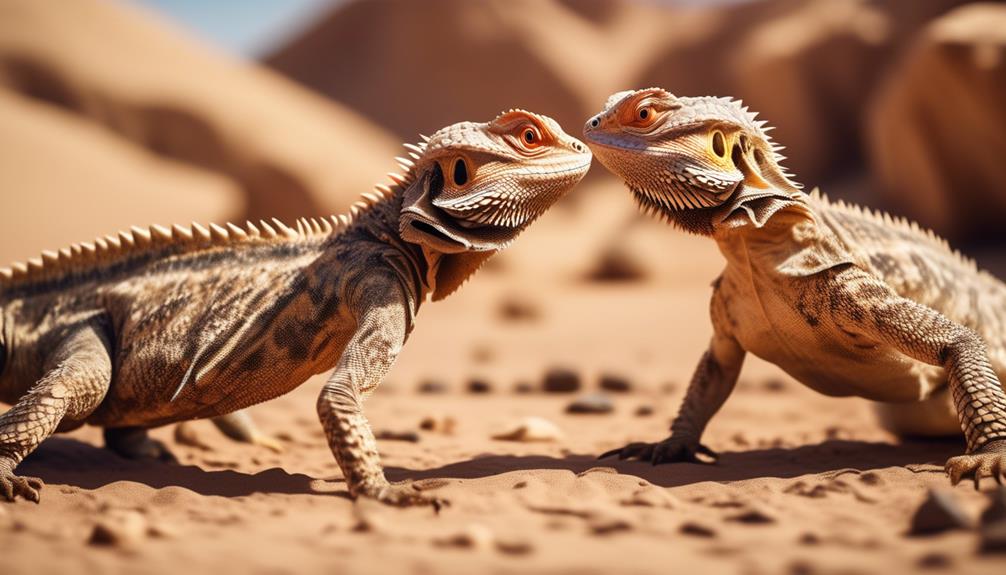Welcome to the fascinating world of squamates, where lizards and snakes reign supreme.
In this article, we will delve into the captivating world of these creatures, exploring their origins, diversity, and importance in ecosystems.
From their scaly skins to their unique reproductive strategies, squamates have evolved remarkable characteristics that have intrigued scientists and nature enthusiasts alike.
As the largest order of reptiles and the second-largest order of living vertebrates, squamates have a significant impact on the natural world.
Their ability to move their upper jaws through the quadrate bones and their diverse reproductive strategies, including parthenogenesis, make them truly remarkable creatures.
Additionally, the evolution of venom in squamates and its role in their predatory behavior adds another layer of intrigue to their already fascinating existence.
However, squamates are facing numerous challenges in today’s world.
Habitat loss and illegal wildlife trading have put many species at risk of extinction.
This makes conservation efforts crucial to protect these remarkable reptiles and the ecosystems they inhabit.
So join us as we delve into the world of squamates, where scientific discovery and conservation efforts go hand in hand to serve these extraordinary creatures and the world they call home.
Key Takeaways
- Squamata is the largest order of reptiles, including lizards, snakes, and amphisbaenians.
- Squamates have a diverse reproductive strategy, including viviparity, ovoviviparity, and oviparity.
- Venom in squamates may have evolved from a common ancestor, and snake venom evolved through a process of gene duplication and selective expression in the venom gland.
- Squamate species are endangered due to various factors, including habitat loss, hunting, and illegal wildlife trading.
Types of Squamates
You may already know that squamates, which include lizards and snakes, can be divided into different types, such as lizards, snakes, and worm lizards, based on their physical characteristics and behaviors.
Lizards are a diverse group of squamates that exhibit a wide range of adaptations and can be found in various habitats around the world. They have scaly skin, clawed feet, and external ears, which distinguish them from snakes.
Lizards

Lizards are known for their ability to climb trees, run on land, and even swim in water. They have adapted to different environments, such as deserts, rainforests, and grasslands, and have developed various mechanisms to survive in these habitats. For example, some lizards have specialized feet for climbing, while others have camouflage to blend in with their surroundings.
Lizards communicate using a combination of visual displays, body postures, and vocalizations. Some species use bright colors to attract mates or intimidate rivals, while others perform elaborate courtship rituals.
Overall, lizards are fascinating creatures with a wide range of adaptations and behaviors.
Snakes
Snakes, on the other hand, are another type of squamate that have evolved to live in a variety of habitats, including forests, deserts, and water. They are characterized by their elongated bodies, lack of legs, and ability to swallow prey whole.
Snakes have a unique way of moving called ‘undulation,’ where they use their muscles to push against objects and propel themselves forward. This allows them to navigate through different terrains, including trees, rocks, and sand.
Snakes have also developed specialized adaptations for hunting and capturing prey. Some species have heat-sensing pits to detect warm-blooded prey, while others have venomous fangs to immobilize their victims.
In terms of communication, snakes primarily rely on chemical signals, such as pheromones, to locate mates and detect prey. They also use body language, such as coiling or hissing, to signal their intentions or defend themselves.
Overall, snakes are fascinating creatures with unique adaptations and behaviors that have allowed them to thrive in various environments.
Evolution and Diversity
Dive into the evolutionary history of these scaly creatures as you witness the ancient origins and remarkable diversity of the squamate order, from their early beginnings to the present day.
Fossil evidence of early squamates reveals that these reptiles have a long and storied history, dating back to the Late Triassic period. One of the oldest known squamates is Megachirella, a lizard-like creature that lived approximately 240 million years ago. This discovery pushes back the diversification of squamate lineages earlier than previously thought.
From these early beginnings, squamates have undergone significant evolutionary changes, adapting to various habitats and ecological niches. Today, the squamate order includes over 10,900 extant species, divided into 60 families, showcasing the incredible diversity within this group of reptiles.
The role of squamates in ecosystem functioning cannot be understated. These creatures play vital roles as predators, prey, and ecosystem engineers. As predators, snakes and lizards help control populations of rodents, insects, and other small animals, thereby regulating the balance of ecosystems. They also serve as important prey items for larger predators, contributing to the overall food web dynamics.
Additionally, squamates, such as geckos and anoles, are known for their ability to climb trees and walls, aiding in seed dispersal and pollination. Some squamates, like the Gila monster and beaded lizards, are venomous, which not only helps them in capturing prey but also serves as a defense mechanism against potential predators.
Overall, squamates have a profound impact on the functioning and stability of ecosystems, highlighting their significance in the natural world.
Reproduction and Venom
Explore the reproductive strategies and venomous adaptations of these scaly creatures as you delve into their fascinating methods of reproduction and the evolutionary development of venom.
Squamate reproductive strategies are incredibly diverse, with species employing various methods to ensure the continuation of their lineage. Some squamates, like most snakes, lay eggs through oviparity, where the female lays eggs that hatch outside of her body. Others, like some lizards, practice ovoviviparity, where the eggs develop within the female’s body and hatch inside her, with the young being born live. Viviparity is another reproductive strategy seen in some squamates, where the embryos develop inside the female’s body and receive nourishment directly from the mother, resulting in live birth.
Venomous squamate species have evolved fascinating adaptations to subdue their prey and defend themselves. Venom in squamates is primarily found in snakes, but it’s also present in a few lizard species. The evolution of venom in squamates occurred through a process of gene duplication and selective expression in the venom gland.
Venoms are not modifications of salivary or pancreatic proteins, but they rather recruit toxins from various protein bodies. Snake venom has diversified to counter the defenses of their prey, resulting in a wide array of toxic compounds that affect different physiological systems. These toxins can immobilize or kill prey, making squamates highly efficient predators.
Understanding the reproductive strategies and venomous adaptations of squamates provides insight into their incredible diversity and the intricate mechanisms that have allowed them to thrive in various ecosystems.
Conservation Efforts
Take a moment to appreciate the crucial role that conservation efforts play in protecting the diverse and endangered species of squamates, ensuring their survival for future generations.
Squamate species face numerous threats that put their populations at risk. Habitat loss is a significant concern, as human activities such as deforestation and urbanization destroy the natural environments that these reptiles rely on for survival. Additionally, illegal wildlife trading poses a significant threat to many squamate species, as they are often captured and sold on the black market for exotic pets or for their skins and body parts. Overhunting also contributes to the decline of squamate populations, as these reptiles are often killed for their meat or for traditional medicinal purposes. Climate change is another growing threat, as rising temperatures and habitat alterations can disrupt the delicate balance that squamates rely on for survival.
In the face of these challenges, breeding programs and wildlife parks play a vital role in the conservation of squamate species. These programs aim to breed and reintroduce endangered reptiles into their natural habitats, increasing their population numbers and genetic diversity. By carefully monitoring and managing captive populations, breeding programs can help prevent the extinction of endangered species and ensure their long-term survival.
Moreover, these programs serve as educational platforms, raising awareness about the importance of snakes and lizards in ecosystems and promoting a greater understanding and appreciation for these often misunderstood creatures. Through public outreach and education, breeding programs inspire individuals to take an active role in conservation efforts, whether through supporting these programs financially or advocating for the protection of squamate habitats.
By working together, we can make a difference in the conservation of squamate species and ensure that these fascinating reptiles continue to thrive in our world.
Frequently Asked Questions
How do squamates molt their scaly skins?
Squamate skin shedding, or molting, is a process where squamates shed their scaly skins to allow for growth and repair. The outer layer of the skin is shed in patches or as a whole, revealing a new, fresh skin underneath.
What is the purpose of the movable quadrate bones in squamates?
The movable quadrate bones in squamates, such as lizards and snakes, provide an evolutionary advantage by allowing flexibility in their jaws. This enables them to adapt their feeding strategies and capture a wide range of prey efficiently.
Can squamates reproduce through parthenogenesis?
Yes, squamates can reproduce through parthenogenesis, a form of asexual reproduction. This process allows females to produce offspring without fertilization. Parthenogenetic species have lower genetic diversity compared to sexually reproducing species.
How did venom evolve in squamates?
The evolutionary origins of venom in squamates is a fascinating topic. It is believed that venom evolved through a process of gene duplication and selective expression, providing adaptive advantages in predation and defense.
What are the main threats to squamate species and why are they important to ecosystems?
The main threats to squamate species include habitat loss, hunting, and illegal wildlife trading. Squamates are important to ecosystems as they play roles in pest control, seed dispersal, and maintaining ecological balance.
Conclusion
In conclusion, the world of squamates is a captivating one that never fails to amaze. From the curious lizards basking in the sun to the graceful snakes gliding through the grass, these creatures have evolved unique characteristics and behaviors that make them truly remarkable.
One striking example of the wonders of squamates is the incredible diversity within the order. With over 10,000 known species, squamates come in all shapes and sizes, each with its own specialized adaptations. Imagine walking through a rainforest and spotting a tiny gecko blending seamlessly into the foliage, or witnessing the lightning-fast strike of a venomous snake as it captures its prey. These moments remind us of the immense beauty and complexity of nature.
However, the conservation of squamates is of utmost importance. With habitat loss and illegal wildlife trading threatening their populations, action must be taken to protect these fascinating reptiles. Just like a delicate ecosystem, squamates are interconnected with their surroundings, playing vital roles in maintaining the balance of nature. By safeguarding their habitats and raising awareness about the importance of their conservation, we can ensure that future generations will continue to marvel at the wonders of the squamate world.
In the end, the world of squamates is a treasure trove of diversity and wonder. It’s our duty to protect and preserve these incredible creatures, not only for their intrinsic value but also for the vital role they play in our ecosystems. Let’s strive to be stewards of the squamate world, ensuring that their scaly skins and remarkable behaviors continue to captivate and inspire us for generations to come.


